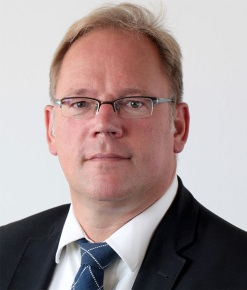
January 21st, 2019
One of EASN's objectives is to support the research activities of European academia in the field of aeronautics in order to incubate technological innovation and to disseminate knowledge. In this context EASN is proposing ASTORIA, a research infrastructure based on modular Unmanned Aerial Systems targeted at open Research and Innovation Actions in Europe. Within the EASN board of directors Andreas Strohmayer, together with Helge Pfeiffer and Spiros Pantelakis, has taken the lead of this initiative to take it to a next step.
Q1: What is the motivation for EASN to promote the concept of an unmanned aerial system for research and innovation?
A key challenge for European aeronautical research is to shorten the innovation cycles for aircraft and air transport technologies. A significant reduction of "science to business" lead time would allow accelerating technology readiness and market impact of academia's upstream research, translating to reduced time and cost for the implementation of novel technologies in future aircraft designs.
With the ASTORIA platforms the results from academic upstream research, typically limited to TRL 4, could be brought to airborne validation in a relevant environment. This would allow to identify concept immanent issues like technical, operational or environmental shortcomings as well as regulatory barriers at an early stage and at the same time it would facilitate an efficient transition from research and innovation to commercialization.
Q2: There are already a number of manned and unmanned test platforms in Europe; why is there still a need for open innovation testbeds?
Manned and unmanned test aircraft owned by the OEMs or large research establishments are in general not accessible for academia to demonstrate feasibility and value of innovative concepts. Keeping in mind that Open Science and Open Innovation are two important pillars of Horizon Europe, ASTORIA therefore aims at a test facility that is accessible at fair cost and conditions to the entire European aeronautics research community.
The need for flight demonstration and validation of technologies and concepts that improve the efficiency, reliability and safety of aviation has been recognized by the Commission by creating Clean Sky. Several cutting-edge technology demonstrators have been developed in this context, all of them however are purpose built and limited to TRL 7 and above. In contrast to this, ASTORIA offers a versatile and modular platform concept open to academia for TRLs of 4 and below.
Q3: What is the advantage of an unmanned test platform compared to a manned aircraft?
Today the validation of new technologies in an operational environment is typically limited to flight test campaigns in the frame of new aircraft developments, increasing program risk and facing stringent regulatory hurdles. The use of an unmanned system in a confined test area can lead to less restrictive authority requirements, but at the same time this approach allows to involve the regulative bodies at a very early stage of technology maturity in order to properly address certification aspects of an innovative concept.
The ASTORIA platforms will have a modular design for a flexible, multi-purpose use. So the platforms are not only open in terms of accessibility to European academia, but also open for a wide range of technologies and configurations. With the intended payload capability in a range of 300-500kg it will be able to integrate a variety of large test set-ups on board, while the unit cost and thus the economic risk of a test campaign remain justified.
Q4: What kind of innovative technologies can be demonstrated with ASTORIA?
Unmanned aerial systems can provide a cost effective means for test campaigns that could otherwise be too dangerous or expensive for a demonstration on manned aircraft. Typical examples would be the testing of radically new aircraft configurations, autonomous flight control algorithms and unconventional flight guidance systems, flexible primary structures or innovative active high lift systems. But ASTORIA can also be used to validate technologies in the fields of materials and structures, acoustics, propulsion and propellants, systems and equipment, data transmission or even smart freight concepts.
Due to scaling effects of course not all new technologies can be reasonably demonstrated with a dynamic free-flight model, in particular due to Reynolds number discrepancies. But think for example of a test campaign for active flutter suppression on a high aspect ratio, flexible wing. Would you like to prove the control principle of such technology on a manned aircraft? The same can be said for larger morphing structures or highly unconventional configurations. Another obvious field of technologies would be flight guidance strategies for the integration of UAS into civil airspace.
Q5: How is it planned to implement ASTORIA for the European research community?
It is proposed to have a small ASTORIA core group that will coordinate the technical implementation in three phases: an initial phase for design and development of the modular UAS test platform itself, and in parallel the identification and preparation of a first suitable test area. In a second phase a small number of innovative technological concepts are selected for flight demonstration and validation to prove the ASTORIA approach. The third phase then aims at setting up at least one full operations centre providing up to six UAS platforms, a defined test area, supporting facilities and UAS insurance. For continuous operations these ASTORIA facilities would also include a small engineering organisation supporting test equipment integration and taking care of modifications required on the platform modules for a specific test set-up. The ASTORIA operations shall be run self-sustaining.
The ASTORIA centres will also take care of the dissemination of project results, enabling Open Science by sharing experiments and knowledge, but at the same time of course protecting the related IP of the innovative researchers. By stimulating innovation and reducing science-to-commercialization lead times ASTORIA contributes to a competitive European aviation industry and to a sustainable air transport system. Moreover, with its modular and versatile platform concept the facility can be open to non-aviation sectors, such as astrophysics, geoscience or medicine.